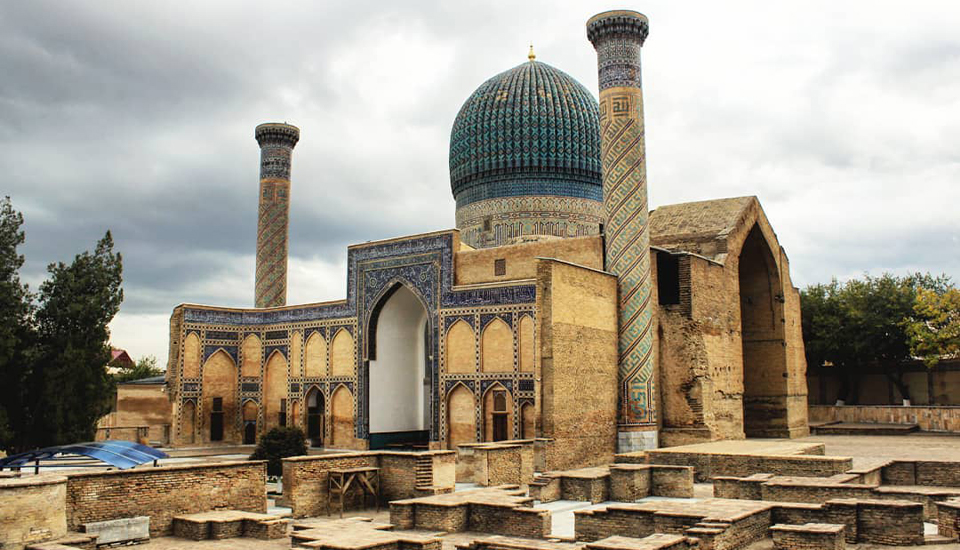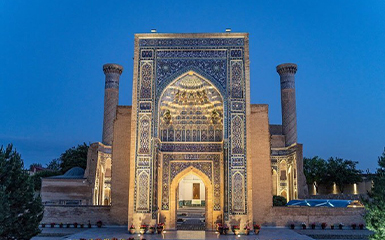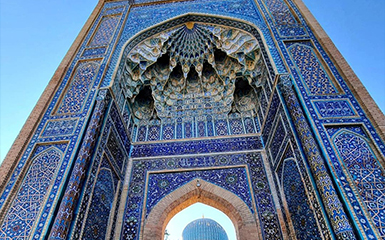Bahauddin complex
Char Minar
Lyab-I Hauz complex
Poi Kalan complex
The Ark Citadel
Bolo Haouz Mosque
Kalan Minaret
Islam Khodja complex
Itchan Kala
Kalta Minaret
Kunya Ark
Kutlugmurat Anak
Alla Kuli Khan
Muhammad Rahim Khan
Muhammed Emin Khan
Pahlawan Mahmud
Tash Hauli
Juma Mosque
Andijan
Muynak
Rabati Malik
Gur-Emir mausoleum

The Gur-Emir mausoleum in the Uzbek city of Samarqand is the tomb of Timur Lenk, some members of his family and other personalities from the ruler's circle, including Ulugh Beg, Shah-Rukh and Mir Said Berke. It was built in 1403/04 and is considered the most outstanding example of the special construction of a double-skinned dome developed under the Timurids. The melon-shaped, ribbed dome of the mausoleum over a high drum forms the dominant centre of the complex.
The mausoleum (qubba) was commissioned during the reign of Timur and was originally intended for his favourite grandson, Muhammed Sultan, who died in the Battle of Angora (1402). Timur had planned his own resting place in his home town of Shahr-i Sabz (formerly Kesh). As early as 1401, a Koran school (madrasah) and a building for a Sufi brotherhood (khanqah) were completed, which later flanked the mausoleum to the right and left of its front. The mausoleum was completed before Timur's death.
The total height of the 34.09 m high mausoleum is divided into three parts. The load-bearing element is an approx. 13 m high substructure with an interior square floor plan, which is extended by niches on all four sides. The outer walls form a regular octagon with an edge length of approx. 7.50 m.
The interior of the mausoleum again has a square floor plan, which is enlarged by four niches, so that a cross-shaped room is created. The niches are designed in the manner of an ivan and transferred into the ceiling of the building with stalactite canopies. The visitor immediately notices that the shape and height of the ceiling do not match the dome that is visible from the outside. The reason for this is that there is a second cupola inside, the shape of which corresponds more to a Persian arch and whose clear height is only 22.85 m. The space between the inner and outer dome shell is hollow, but wooden struts run through it, which support the outer dome shell against the inner dome and thus stabilize the building.
There are several cenotaphs on the floor that mark the respective underground resting places of the dead. The black cenotaph of Timur made of nephrite stands out in this ensemble. There are also inscriptions on it that describe the life of Timur and highlight his Chagataid descent in an idealized form.

